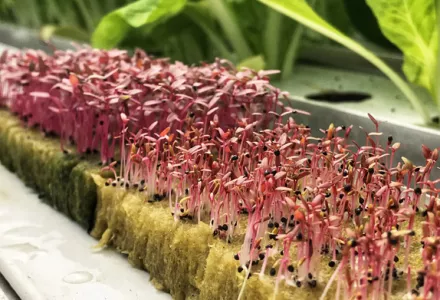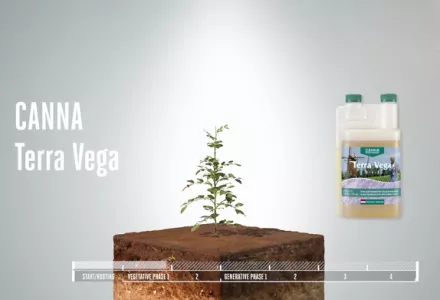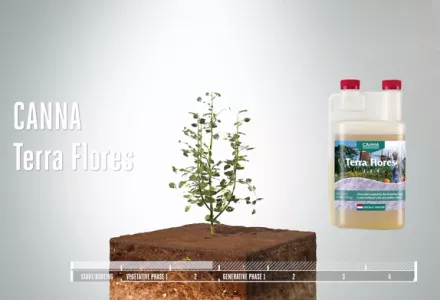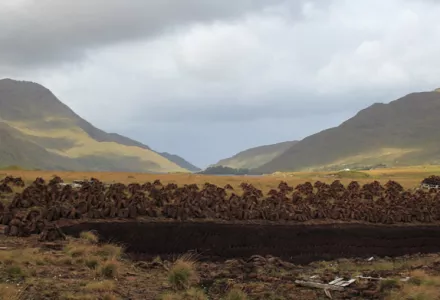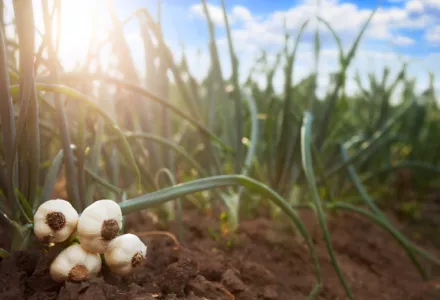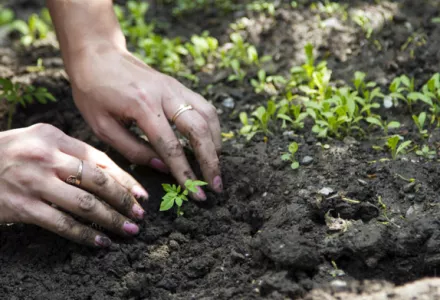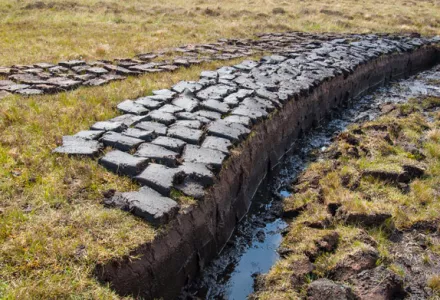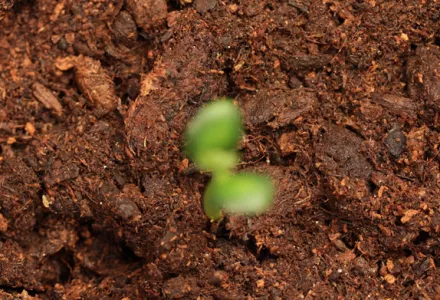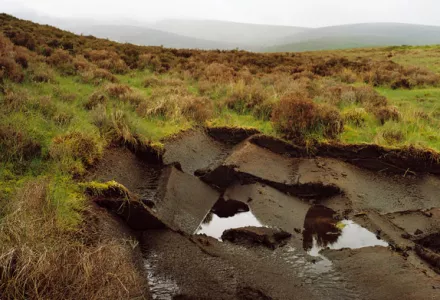We’ll start of by looking at the different types of potting mix available for home growers and we’ve written a section about different types of peat. And we’ll tell you a little about the RHP, the industry’s certification organization. But we have so much info for you that it won’t all fit in one article! In the next part we’ll look into the structure of potting mix and the different products obtained from the various methods of cutting peat. On top of all this useful information we’ll be giving you some valuable tips to reduce disease and increase yield and we’ll be drawing up a list of FAQs and growing tips.
Not all potting soil is suitable for cultivating short cycle crops!
Before we enter into a detailed explanation about potting soils, we should make one thing clear. Not all potting soils are suitable for cultivating short cycle crops, even less for long-term crops. The three most important factors that should be taken into consideration when choosing a potting mix are structure, pre-fertilization and relative pH.
Good pre-fertilizing and proper pH adjustment are critical for a successful harvest. Potting soil, rock wool and coco are the three most important growing medium for fast growing plants. The big advantage in using potting soil is it’s ease of use, it’s buffering capacities, and it’s forgiving nature.
Soiless potting mix is principally biological and natural, which accounts for its great popularity with organic growers. When used in combination with CANNA nutrients, there are almost no residues left in the mix. This means that you can use it as a soil conditioner/improver in an environmentally friendly way, without any problems at all.
Potting mixes have the reputation for being both ‘biological’ and ‘natural’, however that is not entirely true; it often contains components such as perlite and processed mineral nutrients. Perlite is an inorganic material produced by an industrial process.
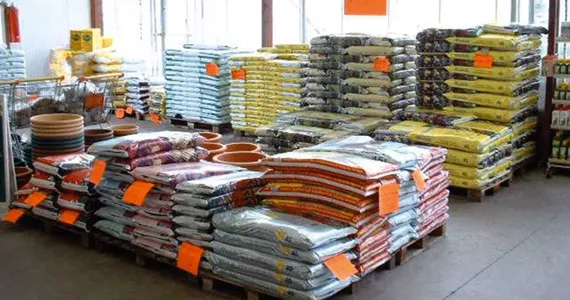
History
Approximately 12,000 years BCE, the glacial ice sheets of the last big ice age retreated northwards, leaving behind a scoured barren and sandy terrain. The first vegetation that developed, grew, and died off, formed the first thin layers of peat, which can still be found in what is known as the ‘dark’ layer. A long formative period ensued, interrupted by short ice ages around 6,000 and 3,000 BCE during which the black peat layer formed. This marked the beginning of a new formative period during which the white peat layer was able to form. The intermediate layer between the white peat and the black peat is called ‘gray’ peat. The growth or ‘upper’ layer forms the profile’s top layer.
A lot of knowledge available
Peat is the basis for any good potting mix. The best peat mainly comes from areas in which the water associated with the peat is mostly affected by rainwater and has a low mineral content; therefore contains few nutrients. This lower mineral content makes it necessary to add all the nutrients needed for growth to the soiless potting mix. This is achieved by using specially prepared potting mix nutrients or biological ingredients such as algae granules, blood meal, fish emulsion, dried cow manure, horn meal, bone meal and worm castings. Trace elements are also lacking and should be added to establish a total baseline nutrient level. The amount of trace elements that the peat absorbs depends on its type, sphagnum moss absorbs less than garden peat for example.
Most loose potting soil mixes that are available in retail shops already contain nutrients and a healthy level of acidity. This provides a stable root environment and reduces the chance of problems with nutrition. The bulk potting mixes of North America have only a bare minimum of these components. The big advantage of soiless potting mediums is that it is easy to work with.
Another big factor that makes many people choose to use potting soils or mixes is that, in comparison to rock wool and coco, there is a tradition of using this medium with more knowledge and experience available.
Different types of high peat
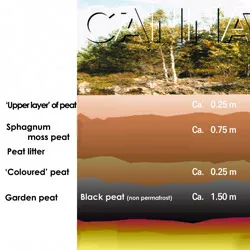
here are many different types and qualities of high peat available. The characteristics of peat depend, among other things, on the depth from which it occurs, the method of extraction and climatic circumstances in the peat region. Working through the peat profile from the top down, we find the following types:
‘Upper layer’ of peat
The ‘upper layer’ is the top 10 inches of the peat profile. According to German peat cutting regulations this layer is removed and then should be laid back on the sandy bed after the white and black peat have been harvested. This layer contains upright stems from the sphagnum moss and is largely alive; water moves easily through this region. A disadvantage of the ‘upper layer’ of peat is that it does not always have a homogenous composition.
Sphagnum moss peat
Sphagnum moss peat is young, partially decomposed sphagnum moss that can retain between 10 to 12 times its own weight in water. It has a light color and is made up almost entirely of different types of sphagnum moss. Because sphagnum moss peat is a relatively young organic material, it degrades more quickly than older types of peat. Sphagnum moss peat is the majority peat in the high quality sorts of potting mixes at present.
Peat litter
Peat litter or peat dust is extracted from the top layer of the peat profile. The product is light brown and only slightly decomposed. Peat litter can retain at least 8 times its own weight in water. Water uptake and release is a slower process in this peat than in sphagnum moss peat. Peat litter is available as fine, normal and coarse. The grade depends on the method used for extraction. The fine grade is extracted horizontally with the peat being cut out layer by layer, then dried and harvested. This is the cheapest method. In order to produce a larger coarse grade, the more expensive vertical pitch method of extraction has to be used.
‘Colored’ peat
‘Colored’ or ‘gray’ peat comes from the layer between the white and black peat layers. This layer has decomposed further than the white layer and its color lies between the white and black peat. ‘Colored’ peat can retain less water than peat litter and sphagnum moss peat.
Garden peat
Garden peat is an important source for the potting soil industry. It is produced by allowing wet black peat to freeze. The quality of the garden peat depends on the extent to which it has been frozen. Freezing black peat improves its water retention qualities and reduces shrinkage. After drying garden peat can take up at least 4 times its own weight in water. Garden peat is dark brown, which is a good indication that it has already reached an advanced stage of decomposition. It consists of very fine particles, which gives it a relatively low air content.

Black peat (non permafrost)
Non-permafrost black peat, which is also known as old peat, champ peat or casing soil peat, is not suitable for potting soil because it shrinks greatly when it dries and thereafter has low water retention levels. When it is thoroughly dried, it becomes very hard peat (pressed peat) that can and is still used as fuel.
Prevent damage!
Peat is naturally quite acidic (pH 3.5-4.5) so lime must be added to raise the pH. Off the shelf, most potting mixes contain lime. The amount of lime that must be added depends on the composition of the peat.
For example, garden peat always needs more lime than peat litter to raise the pH. On average, potting soil needs 11 – 13 lbs of lime per m3 (264 gallons) to increase the pH. After adding the lime it will take a few weeks for the pH to stabilize. If no lime is added, or not enough, high concentrations of elements such as manganese, iron and phosphate will become highly available which may lead to signs of over feeding or toxicity. The concentration of aluminum can rise to toxic levels for the plant, causing root thickening, which will restrict nutrient uptake. If your potting mix’s pH is too low, the addition of 20 grams of lime (Dolomitic) per 2.65 gallons (10 liters) will raise the pH one point.
The correct degree of acidity for potting mediums is between 5.8 and 6.2; values higher than 6.2 can lead to phosphate depositing out of solution in the form of calcium phosphate, making it less accessible to the plant.
What is the RHP?
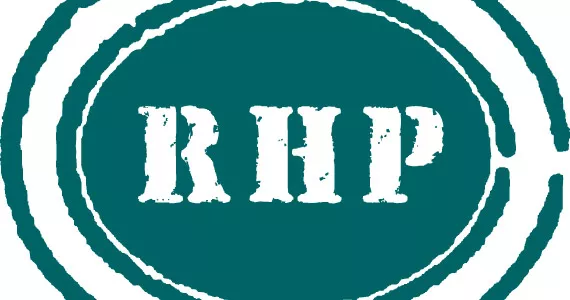
Potting soil mixes that are available on the market can vary greatly in quality from one to the other. In the Netherlands the RHP foundation focuses on quality maintenance and control of peat products, soil components, potting soil mixes and substrates such as coco, perlite, pumice stone etc. Substrates and substrate components that have the RHP quality mark are safe mixes (few weeds and free of disease) but they do not offer any guarantee of a successful harvest. In fact, the RHP quality mark does not say anything about the precise structure and chemical make up of the potting soil. Potting soil mixes can also vary greatly in price. Potting soil mixes based on garden peat are generally cheaper than mixes based on airy white peat. It also follows that coarser grades of white peat are many times more expensive than the fine grades.
Better results
Previous research into the proportional balance of water and air in CANNA substrates led to CANNA set up practical tests using soiless potting mixes comprised of high quality, porous basic materials. These mixes were compared with the popular soiless potting mixes containing perlite that are available on the market. In different growing rooms, half of the plants were set in a soiless potting mix containing perlite and the other half was set in the airier mix. Climate and feeding was identical for all plants. After three weeks clear differences could be seen. The plants on the airy mix showed significantly better growth; on average 2 inches more development in length and they had more robust stems. There were fewer limp hanging leaves during the night indicating the plant was receiving sufficient water in the dark, a prerequisite for optimal growth and flowering.
The results of these tests show the importance of making abundant air available to the root environment.

